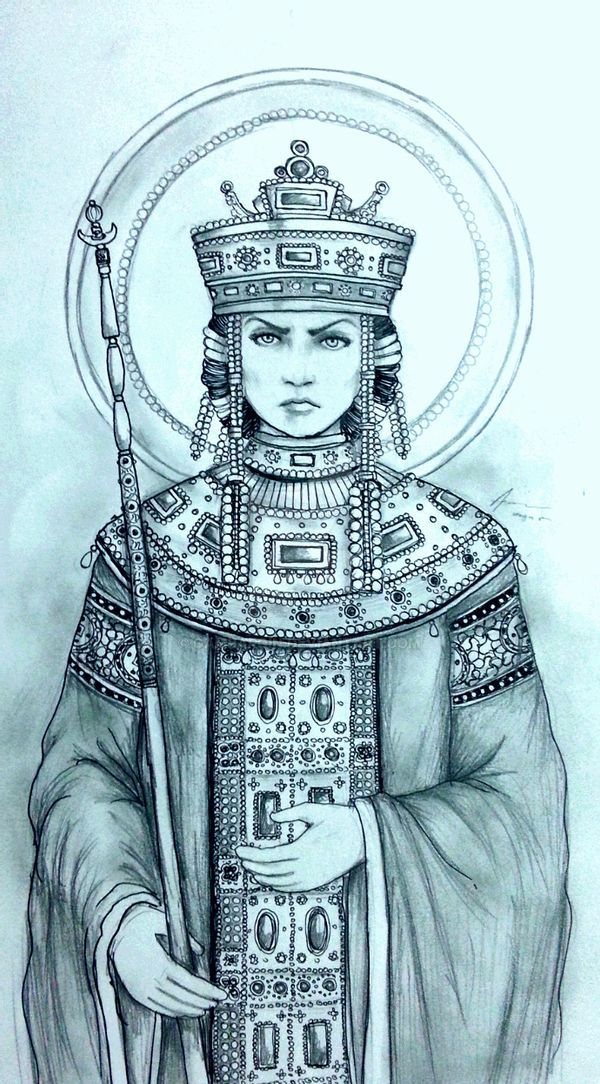Exarch
The title of Exarch (feminine: Exarchissa) is one of the more recent titles adopted in the Aeillan region. Initially adopted during the Imperial Law Review of 371 EA, the title of Exarch was intended to serve as military governors and high level administrators. Over time, and after the fall of the Aeillan Empire, the Exarchies became permanent, ruling positions, effectively kings in their own right.
Appointment
Generally an Exarch ascends to the throne through heredity with traditional Aeillan laws favoring Cognatic or Agnatic-Cognatic Primogeniture. Some Exarchies allow families to elect to adopt competent notables into their family to ascend the throne instead. Oftentimes, the Exarch is, practically speaking, a position that can be easily seized in palace coups.
Duties
Generally speaking, Exarchs are expected to command the armies of the Exarchy in major campaigns, and are often either presiding Consul for an elected or oligarchical legislature, or are outright responsible for ruling by decree. Exarchs represent the pinnacle of authority in an Aeillan successor state and are expected to rule with absolute authority.
Responsibilities
Though other functionaries are responsible for the actual operations of the state on a day to day basis, the Exarch is responsible for appointing and managing the administrative functionaries that actually keep the state running, and similarly must do so for the military officers, though in some states the top military position is a hereditary title attached to a lower ranked notable. Exarchs are also responsible for issuing taxes and hiring tax collectors to collect those taxes. Lastly, an Exarch will often receive foreign dignitaries.
Benefits
Exarchs, on top of receiving de jure rulership of a country, are often allowed to live in a richly appointed palace in the capital, an elite bodyguard, and usually a small percentage of the taxes payed to the state. Exarchs are also generally immune from most forms of criminal punishment and laws.
Accoutrements & Equipment
An Exarch will often have a crown, scepter, and colored, generally red or purple silk, principal robes for use in official ceremonies, and a simple diadem for the purposes of daily wear. An Exarch will also often have an ornate suit of armor made for them to wear on campaign, and in the case of Spathos, Nikea, and Troinae have a spear, rapier, and broadsword respectively that are ancestral weapons that serve as badges of office for a regnant Exarch.
Grounds for Removal/Dismissal
Exarchs once enthroned generally serve for life, though some states enable their senates to enforce abdication from the throne if they fail to perform their duties or if they violate certain laws. In practice, most Exarchies are very prone to palace coups and assassination attempts, and this most often happens in the case of weak rulers, stubborn rulers, and more rarely tyrannical ones.
History
First created in 371 EA, the title of Exarch was initially an administrative title meant to break up responsibilities in managing the Aeillan Empire at a more local, more responsive capacity. Exarchs were, historically appointed by the Basileus serving at the ruling monarch's pleasure, and often easily replaced by other members of the aristocracy. Serving as a military-governor, the Exarchs had to carry out the daily administration of the Empire, but also to respond to localized military threats, raiding from foreign powers or minor insurrections.
After the death of Alexios III Rauros, the Exarchs quickly turned on each other, and in a brutal civil war, tore the Aeillan Empire apart. At its conclusion, the Empire was dissolved and largely broken up along the lines of the Exarchies, with the title changing from an administrator, to a ruling title in its own right, frequently becoming hereditary as well. Exarchs were diminished in power compared to the Basilei of old, but once the dust of the Succession War had settled, the Exarchates went back to carrying out the daily maintenance of their territories.
As power systems became more entrenched many Exarchies adopted more and more of the traditional Imperial symbology, wearing purple, adopting more ornate crown jewels, and acting more and more as protectors of the realm, as First citizens, then they did as high level bureaucrats. A select few have begun to see themselves as rightful rulers of all of Aeilla, and have begun to put plans into place to secure the old Empire.
Cultural Significance
The rank of Exarch is one of great power, the ruler of a former province of the Aeillan Empire, an Exarch generally has power over a million souls, and a comparatively sizable professional army. Exarchs are generally assumed to be the first citizens of their states, if not divine rulers in their own right, and many have autocratic power over their nations. Additionally, it is widely believed that Exarchs are the sole persons who have the right to try and reunite the Empire.
Type
Civic, Political
Creation
EA 371
Form of Address
His/Her/Their/Your Grace
Alternative Naming
Princeps, Prostrategos
Equates to
King, Grand Prince, Consul
Source of Authority
Formerly the Aeillan Basieleus, currently variable
Related Locations



